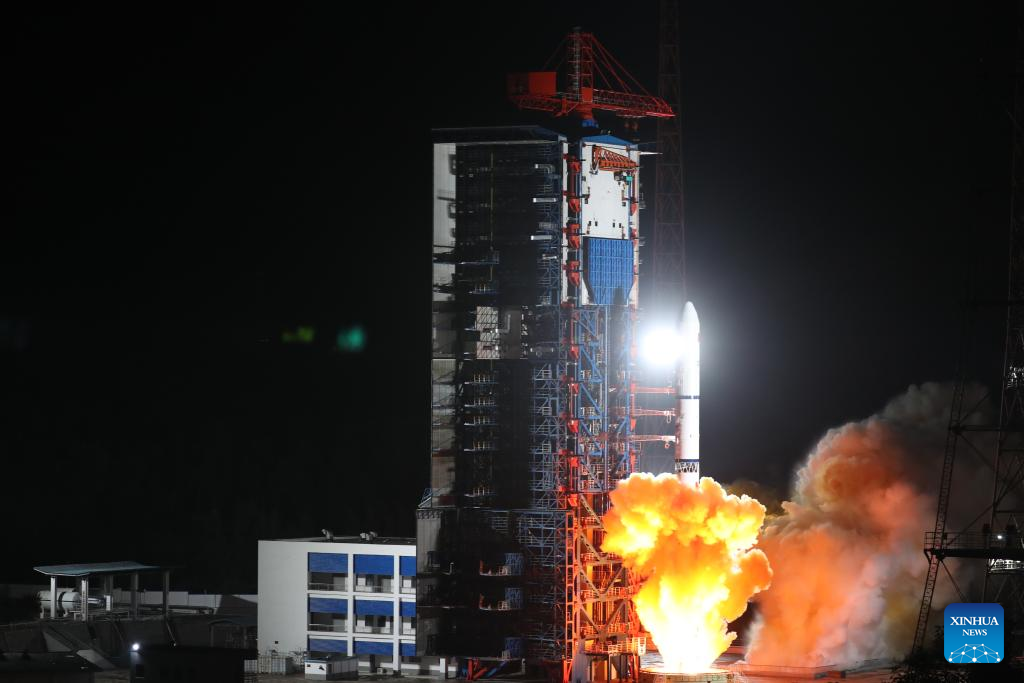27.07.2023

A remote sensing satellite group composed of three satellites carried by a Long March-2D carrier rocket is launched from the Xichang Satellite Launch Center in southwest China's Sichuan Province July 27, 2023. The three satellites of the Yaogan-36 family have entered the preset orbit. This mission was the 480th flight of the Long March carrier rockets. (Photo by Zhang Yingjian/Xinhua)
China launched a Long March-2D carrier rocket on Thursday to place a remote sensing satellite group composed of three satellites in space.
The three satellites of the Yaogan-36 family were launched at 04:02 a.m. (Beijing Time) from the Xichang Satellite Launch Center in the southwestern province of Sichuan and entered the preset orbit.
This mission is the 480th flight of the Long March carrier rockets.
+++
China launched a Long March-2D carrier rocket on Thursday to place a remote sensing satellite group composed of three satellites in space.
The three satellites of the Yaogan-36 family were launched at 04:02 a.m. (Beijing Time) from the Xichang Satellite Launch Center in the southwestern province of Sichuan and entered the preset orbit.
This mission is the 480th flight of the Long March carrier rockets.
The Long March series carrier rockets have set a new record of 150 consecutive successful launches.
Thursday's launch is also the 78th mission of Long March Long March-2D carrier rocket.
The Long March-2D carrier rocket is a two-stage launch vehicle with a take-off thrust of 300 tonnes.
It is capable of lifting 1.3-tonne payloads to the solar synchronous circular orbit 700 km above Earth.
This rocket has the launch capabilities of single-satellites and multi-satellites to various orbits. It can be launched from the country's three major satellite launch centers in Jiuquan, Taiyuan and Xichang.
Thursday's launch is also the first launch mission of the Long March-2D carrier rocket from the Xichang Satellite Launch Center this year.
To ensure stable operation of the launch site in the hot and rainy climate during the summer, the rocket has undergone improvements in terms of its design, production, storage and inspection based on experiences from previous missions. Waterproof and rainproof measures have been implemented for both the rocket and the launch facilities.
Measures, including continuous air supply to the satellite fairing, have been adopted to ensure safer and sounder environmental conditions for the satellites.
Quelle: Xinhua
